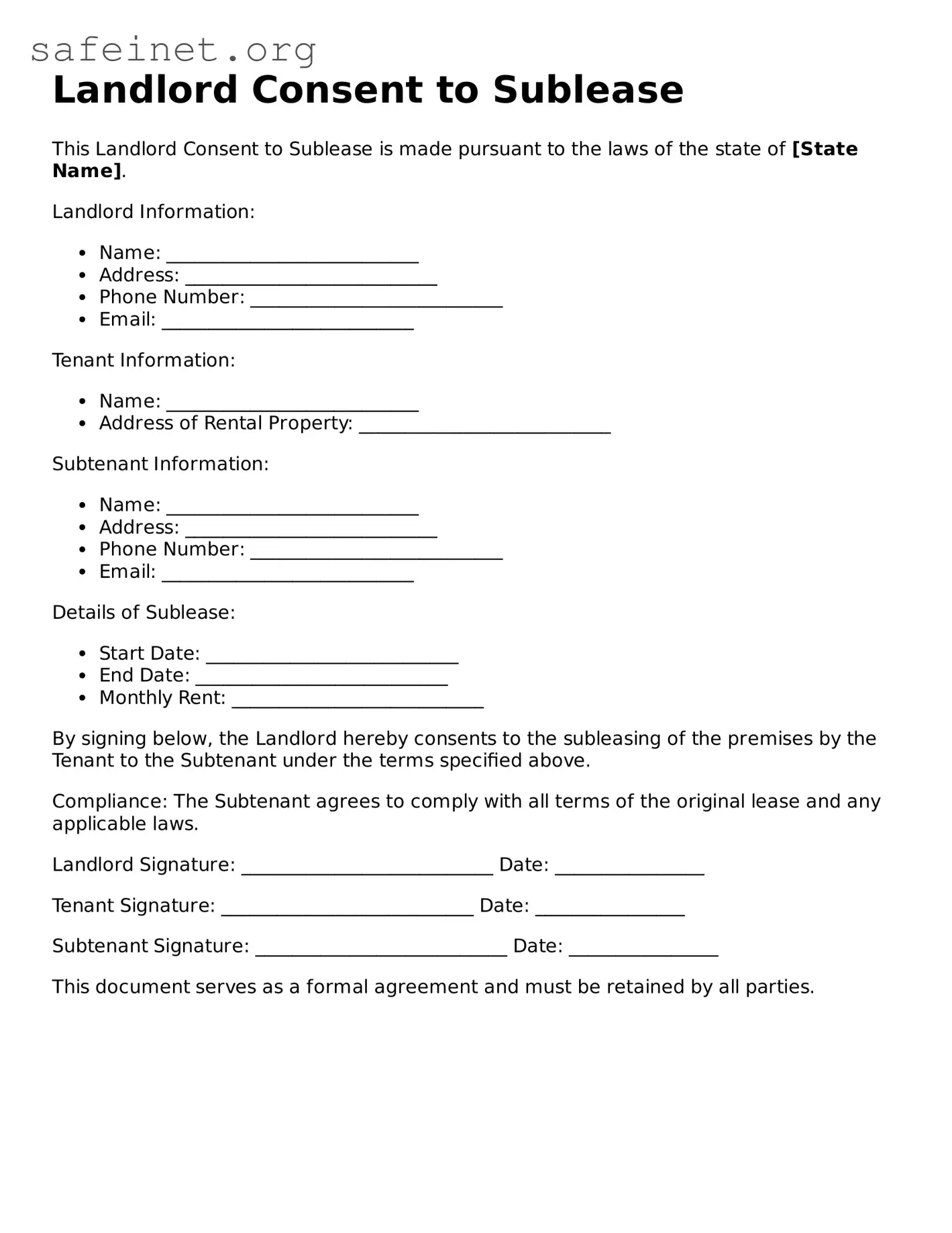Landlord Consent to Sublease
This Landlord Consent to Sublease is made pursuant to the laws of the state of [State Name].
Landlord Information:
- Name: ___________________________
- Address: ___________________________
- Phone Number: ___________________________
- Email: ___________________________
Tenant Information:
- Name: ___________________________
- Address of Rental Property: ___________________________
Subtenant Information:
- Name: ___________________________
- Address: ___________________________
- Phone Number: ___________________________
- Email: ___________________________
Details of Sublease:
- Start Date: ___________________________
- End Date: ___________________________
- Monthly Rent: ___________________________
By signing below, the Landlord hereby consents to the subleasing of the premises by the Tenant to the Subtenant under the terms specified above.
Compliance: The Subtenant agrees to comply with all terms of the original lease and any applicable laws.
Landlord Signature: ___________________________ Date: ________________
Tenant Signature: ___________________________ Date: ________________
Subtenant Signature: ___________________________ Date: ________________
This document serves as a formal agreement and must be retained by all parties.
